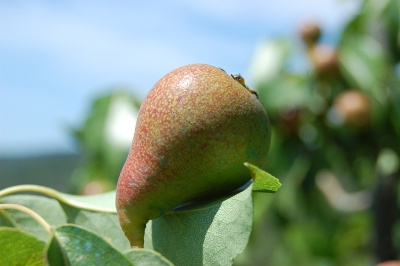︎︎︎ PERA CANNELLA

La pianta madre è stata ritrovata a Gualdo Tadino (PG); l’origine è incerta e non state rinvenute altre piante di questa varietà nella stessa zona. L’albero è mediamente vigoroso e rustico, presenta una chioma a portamento assurgente; è produttivo e fiorisce precocemente.
Il frutto è di piccola pezzatura, è allungato e piriforme, con il peduncolo grosso e diritto. L cavità calicina è piccola e poco profonda. La buccia è di medio spessore con numerose piccole lenticelle emerse, di colore giallo con colorazione rosso mattone dalla parte del sole e in tutta la parte del calice.
La polpa è bianca, succosa e molto fine, liquescente, molto zuccherina e profumata di cannella . Di ottima qualità. Matura i primi di agosto, è di immediato consumo. Il Tamaro nel suo trattato di frutticoltura del 1915 definisce un gruppo di pere Rossette o Cannelline per il loro sapore di cannella, che sembrano corrispondere alla nostra.
The mother plant was recovered in the area of Gualdo Tadino (Perugia); its origin is not certain and no other plants of this variety were recovered in this area. The tree is on the average vigorous and hardy, and its crown has compressed habit. It is productive and blooms prematurely. The fruit is small in size, elongated and pear-shaped. Its stem is thick and straight. The calyx is small and not too deep. The skin is of medium thickness, yellow with brick red splashing in the sun and in the calyx area and with many small raised lenticels. The flesh is white, juicy and very fine; it is melting, very sugary and cinnamon scented. It is of very good quality. It matures in early August and must be eaten right away. In his fruit-farming treatise in 1915 Tamaro describes a group of rosette (little roses) or cannelline (little cinnamons) pears as having a cinnamon flavor and thus seem to correspond to our variety.